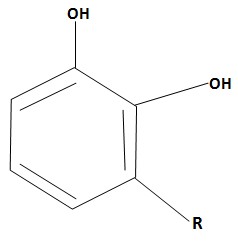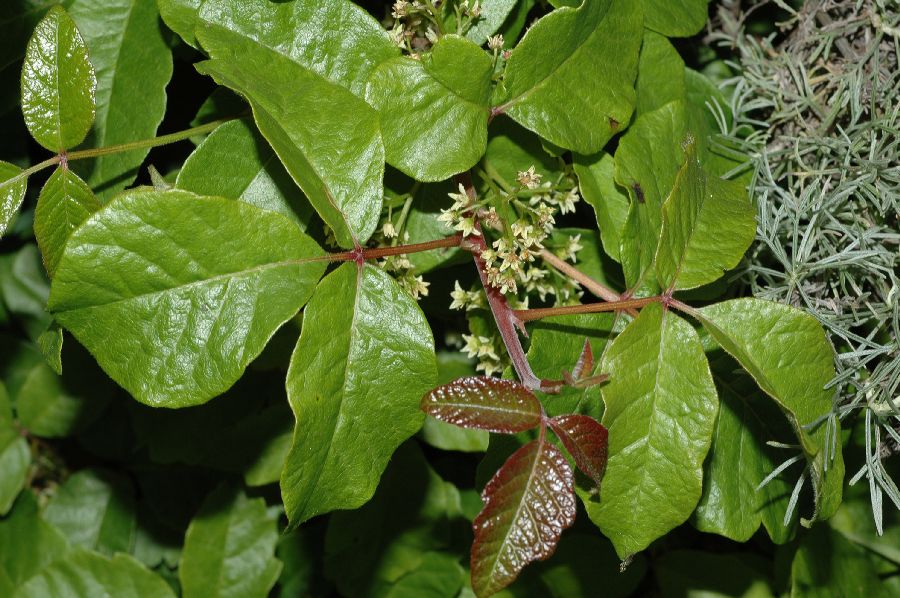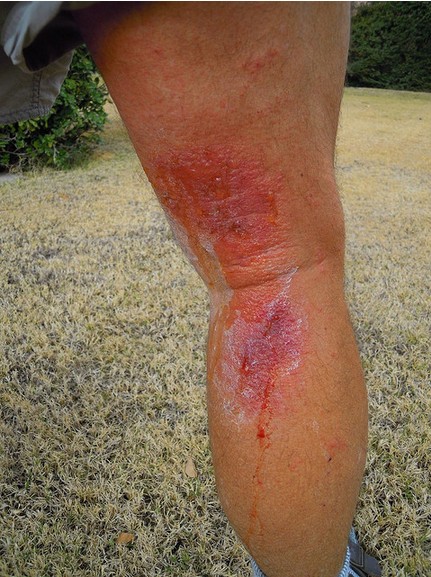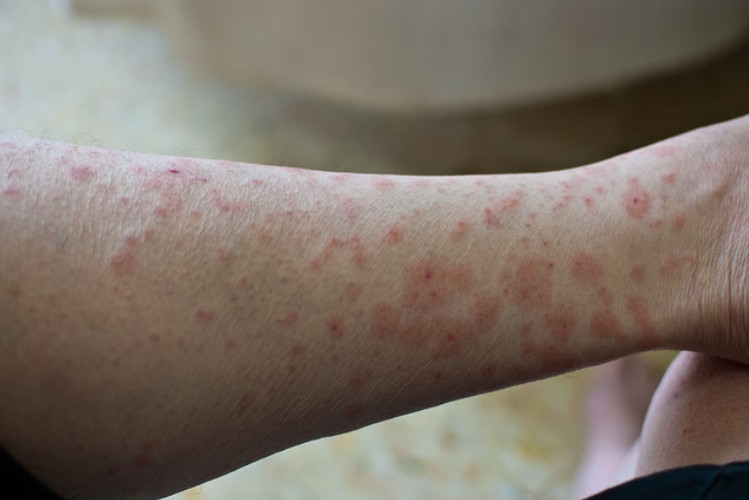Toxicology
Introduction to uruhsiol…
The poison in Toxicodendron diversilobum is known as uruhsiol. Urushiol is an oil that runs with the sap in the poison oak plant. Since it is found in the sap this means that urushiol is actively flowing throughout every part of the plant: stems, roots, leaves, the fruit, and can even be active in all these parts when the plant is dead since it is an oil. The pressure in the phloem which contains the sap causes any breakage or knick in the plant to release oil. This means that no matter what portion of the plant you touch you will have already gotten the uruhsiol poison on you. Making matters worse usurhiol can persist on clothing, gloves, boots, tools, and other objects it has come in contact with for months.
 How it works…
How it works…
A human gets urushiol dermatitis when they come into contact with member of the Toxicodendron genus and cause an abrasion or cut to the plant releasing its urushiol onto you. Urushiol consists of a catechol molecule attached to an alkyl chain at R. It usually takes between 24 and 48 hours for a reaction to occur and around 80% to 90% of Americans will get a rash if they came in contact with urushiol. When uruhsiol gets on our skin it is actually harmless, however, when it binds to the cell membranes of our skin it causes an immune response. This immune response is what causes the itchy rash we associate with the Toxicodendron genus. The T-cells in our immune system is what causes this reaction. They attack the cells that have urushiol bound to them seeing them as a foreign body and trying to destroy them.
Treatments…
Treatment really depends on your sensitivity to the urushiol poison. For people who have a mild reaction to urushiol there are a few different home remedies to help the itching. What many people recommend is taking a paper towel and rubbing alcohol and wiping the infected area to get the uruhsiol to bind to the paper towel and mix with the alcohol rather than your skin. Another thing you should do is wash the area with soap and water as soon as you think you came into contact with the urushiol. The best thing you can do is try to prevent spreading the uruhsiol by not itching yourself as hard as that sounds if you do it will be all over your hands and under finger nails.
For people with more severe reactions many times an antihistamine or hydrocortisone cream can be used to help alleviate the itching. Also antihistamine can be taken by mouth as well, usually Benadryl. For even more extreme cases with blistering occurring corticosteroids can be prescribed.
Check out these nasty rashes...


